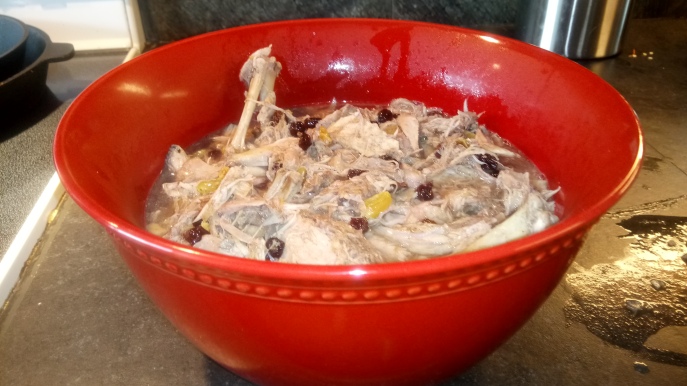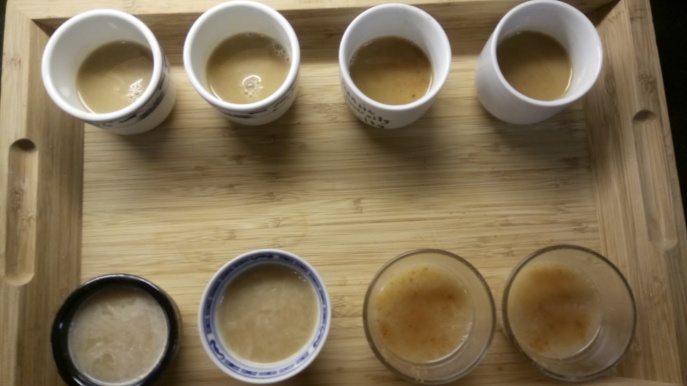For thanksgiving I made 3 partridges instead of a turkey. Partridges are an extremely lean meat, and need a sauce. This sauce has the ‘fatty’ mouthfeel that these birds need.
I made my own almond milk because I find the almond milks commercially available to be really thin. I used 1 cup of sliced almonds and two cups of water. I soaked the almonds overnight in the blender (but an hour long soak should be fine). Then blend the soaked almonds for as long as you can stand the noise for (2-5 minutes) and then strain. It should yield ~2 cups of almond cream.
I also made my own verjuice (in the spring but now I’m just showing off). The verjuice is acidic, however almond milk won’t curdle like cows’ milk would.
If you just stir egg yolks into the mixture before heating everything you are likely to get clumping instead of a smooth sauce. In this recipe I heat all the ingredients and then add a bit of the hot liquid to the egg yolks before adding the egg yolk mixture to the hot liquid. This is not what it says to do in the original, please play with the recipe yourself and see what happens, or if you prefer the effect. When redacting a recipe you have to know some things about how the ingredients are going to interact so I stand by my egg-yolk handling.

Sexy partridge legs waiting for a dip into the almond sauce.
VIII – Broth with eggs in (sauce) for good partridge. Broth of partridge, take milk of almonds and egg yolks and saffron and verjuice and sweet spices and allow to boil enough until it is cooked and it will be good. Libro di cucina (Italy, 14th/15th c. – Louise Smithson, trans.)
Ingredients:
- 2 cups thick almond milk
- 2 saffron threads
- 1/2 cup verjuice ( I used crab-apple, but grape would work)
- 1/4 tsp ginger
- 1/4 tsp cinnamon
- 3 egg yolks, mixed with a fork.*
Directions
- Stir almond milk, saffron, verjuice, ginger, and cinnamon together in a sauce pan. Put the pan to heat on medium-high until it comes to boil, stirring often.
- Put 1/2 cup of the hot mixture into the egg yolks and acting quickly stir really well. Slowly pour the yolk mixture into the main sauce pan while stirring really well.
- Let mixture simmer on low until guests are ready for the meal, stirring often.
* to use up the whites I recommend white torte.




